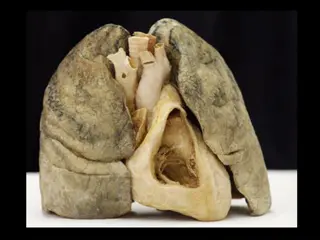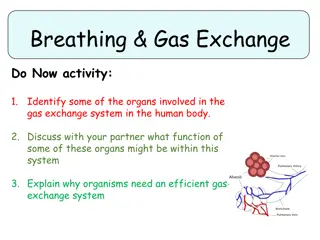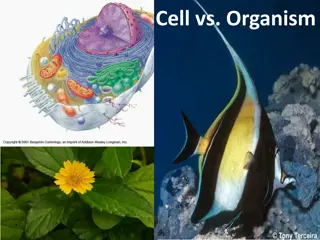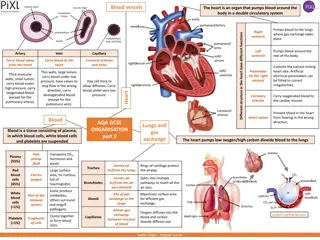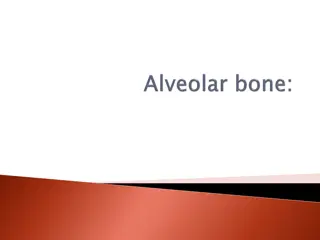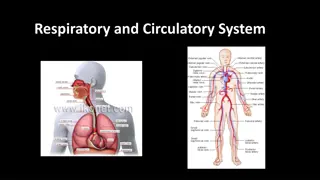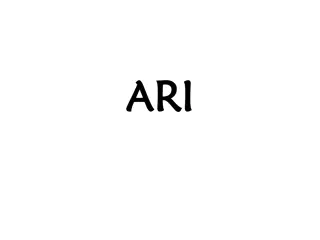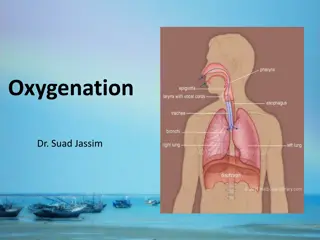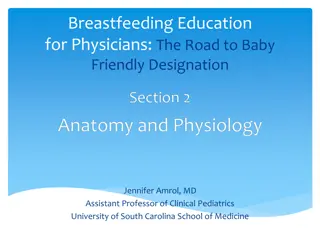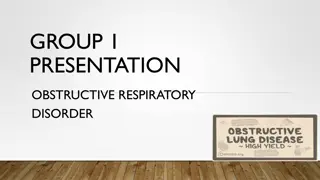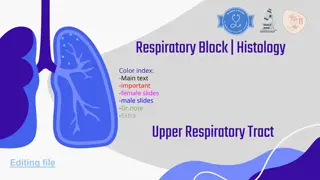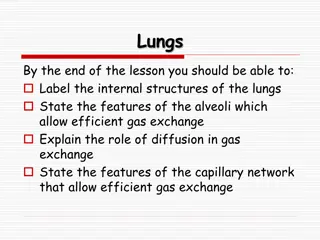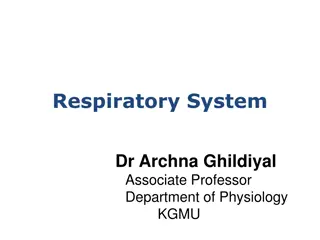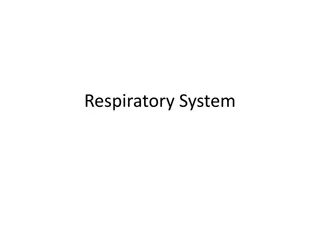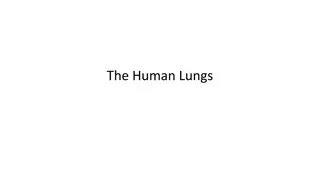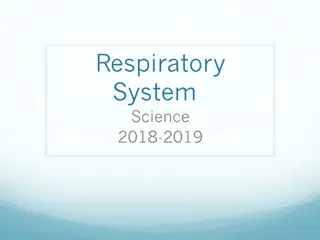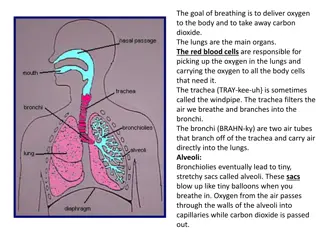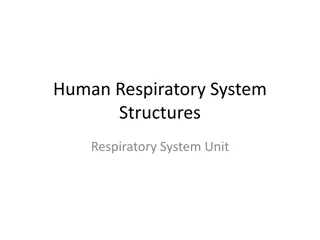Functions of the Respiratory System and Ventilation Mechanism
The respiratory system performs crucial functions such as ventilation to facilitate gas exchange, maintaining pH balance, and enabling vocal sounds. It consists of the upper and lower respiratory systems, including structures like the nose, trachea, bronchi, and alveoli. The system's epithelium, the
8 views • 43 slides
The Human Gas Exchange System
Explore the essential organs involved in the human gas exchange system, discussing their functions and the importance of efficient gas exchange in organisms. Dive into the process of breathing, gas exchange, and the role of key structures like alveoli and capillaries. Engage in self-assessment tasks
2 views • 18 slides
Gas Exchange in Cells and Organisms
Gas exchange is vital for cellular respiration and photosynthesis. In organisms, specialized structures like alveoli in lungs and stomata in plants facilitate this process. This exchange occurs through diffusion across moist surfaces with large surface areas. In animals, oxygen is taken up by hemogl
0 views • 40 slides
Overview of the Respiratory System
The human respiratory system facilitates gas exchange crucial for cellular energy production. Comprised of the upper and lower respiratory systems, it filters, warms, and humidifies air before reaching the alveoli for efficient exchange. Functions include gas exchange, air movement, and protection f
1 views • 24 slides
Components of the Circulatory System
The circulatory system, comprising the heart, blood vessels, and various components like arteries, veins, and capillaries, plays a crucial role in distributing oxygen, nutrients, and waste products throughout the body. The heart pumps blood through a double circulatory system, ensuring oxygenation o
0 views • 4 slides
Role of Alveolar Process in Dental Support
The alveolar process in the upper and lower jaw plays a crucial role in supporting teeth, anchoring them to the alveoli with Sharpey's fibers. It helps in tooth movement for proper occlusion, absorbs and distributes occlusal forces, supplies vessels to the periodontal ligament, and protects both pri
2 views • 42 slides
The Respiratory System and its Vital Functions
The respiratory system plays a crucial role in our bodies by taking in oxygen and expelling carbon dioxide. Key components include the lungs, diaphragm, bronchi, and alveoli. Air enters through the nose or mouth, travels down the trachea to the lungs, where oxygen is absorbed into the bloodstream an
0 views • 26 slides
Acute Respiratory Infections (ARI)
Acute Respiratory Infections (ARI), characterized by sudden onset respiratory symptoms affecting the respiratory system from nose to alveoli, are a complex group of diseases caused by various agents. Symptoms include pain in the sinuses, nasal congestion, fatigue, sinusitis, coughing, and more. The
0 views • 16 slides
Oxygenation and Respiratory System Function
Explore essential terms like alveoli, perfusion, atelectasis, and more in the context of respiratory system function. Learn about lung anatomy, oxygenation processes, and common respiratory disorders like dyspnea and hypoxia. Discover the crucial factors for maintaining normal respiratory function.
0 views • 35 slides
Breastfeeding Education for Physicians: The Road to Baby-Friendly Designation
Explore the anatomy and physiology of breastfeeding, including the composition of human milk and individual components. Delve into breast anatomy, mammary tissue, alveoli, ducts, nipple and areola structure, and how inverted nipples can still allow for breastfeeding with appropriate assistance. Lear
0 views • 60 slides
Pulmonary Emphysema: Symptoms, Causes, and Pathophysiology
Pulmonary emphysema, a type of obstructive respiratory disorder, is a progressive lung disease that affects the air spaces in the lungs. This condition is primarily caused by long-term exposure to irritants like tobacco smoke and air pollution. The damage to the alveoli leads to symptoms such as sho
0 views • 49 slides
Overview of Respiratory System Components and Functions
The respiratory system consists of vital components like pulmonary compliance and surfactant, crucial for proper lung function. Pulmonary compliance reflects the lung's ease of expansion, influenced by factors like lung elasticity and surface tension. Surfactant, produced by type II alveolar cells,
0 views • 15 slides
Nasal Cavity Histology and Respiratory Structures
The detailed information provided covers the histological structures of the nasal cavity, including the vestibule, respiratory mucosa, nasal septum, olfactory mucosa, and paranasal sinuses. It also delves into the microscopic structures of the wall of the trachea and primary bronchi. The respiratory
0 views • 11 slides
Pulmonary Abnormalities and Their Physiologic Effects
Chronic pulmonary emphysema is a complex obstructive and destructive lung condition typically caused by smoking. It leads to chronic infection, excessive mucus production, airway obstruction, and lung tissue destruction. The physiological effects of emphysema include hypoxia, hypercapnia, and severe
0 views • 12 slides
The Anatomy and Function of Lungs
Explore the internal structures of the lungs, the features of alveoli for efficient gas exchange, the role of diffusion in gas exchange, and the characteristics of the capillary network that facilitate efficient gas exchange. Includes visual aids and explanations.
0 views • 9 slides
Respiratory System: Lectures on Alveoli Stability, Compliance, and More
Dive into the complexities of the respiratory system with these enlightening lectures covering topics such as the stability of alveoli, lung compliance, airway resistance, surface tension, and the interdependence of alveoli. Gain insights into the factors affecting pulmonary ventilation and learn ab
0 views • 32 slides
The Respiratory System and Its Functions
The respiratory system is vital for gas exchange in the body, involving processes like pulmonary ventilation, external and internal respiration. It includes organs like the nose, pharynx, larynx, and trachea, which help in conducting air to the alveoli. This system facilitates the exchange of oxygen
1 views • 14 slides
The Intricate Working of the Human Lungs Explained
The human lungs play a vital role in the efficient exchange of gases to provide oxygen for cellular growth and remove waste gases. Unlike some organisms that can use cutaneous respiration, humans rely on their lungs, which work in harmony with the cardiovascular system. Through a complex process inv
0 views • 11 slides
The Respiratory System and the Process of Respiration
The respiratory system is vital for breathing as it helps in the exchange of oxygen and carbon dioxide. This system consists of organs such as the lungs, bronchi, and alveoli. The process of respiration involves inhaling air through the nose or mouth, passing it through the trachea and bronchi into
0 views • 5 slides
The Importance of Breathing and Respiratory System
Breathing plays a crucial role in delivering oxygen to the body and removing carbon dioxide. The respiratory system, including the lungs, trachea, bronchi, and alveoli, functions to facilitate this vital process. The diaphragm muscle helps in inhaling and exhaling, while the exchange of oxygen and c
0 views • 14 slides
Human Respiratory System Structures
Delve into the intricate structures of the human respiratory system, from the essential organs like the lungs and diaphragm to the pathways such as the nasal cavity, mouth, pharynx, and trachea. Learn about the functions of key components like the epiglottis, larynx, bronchi, bronchioles, and alveol
0 views • 12 slides
